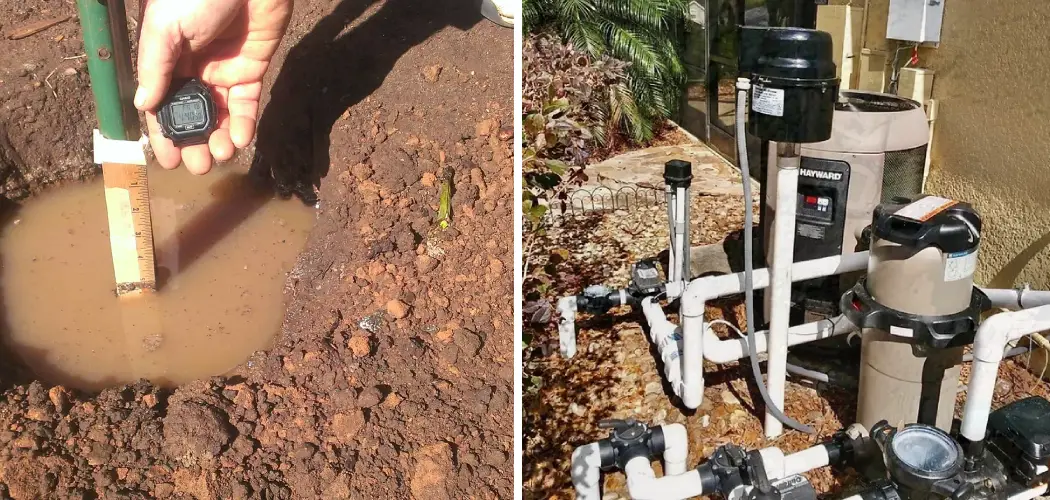For several reasons, knowing to do a perc test for a septic system is important. First and foremost, proper installation and maintenance of a septic system is crucial for protecting the health and safety of your family and the environment.
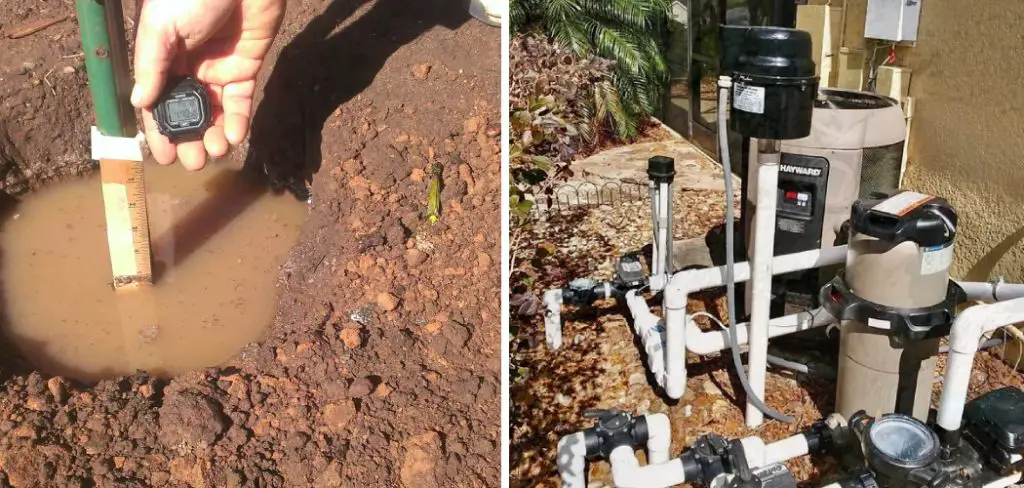
A failed or malfunctioning septic system can lead to contamination of groundwater and surface water sources, which can have serious consequences.
The main advantage of doing a perc test for septic system is to determine the suitability of the soil for wastewater treatment and disposal. By conducting a perc test, you can ensure that your septic system will function properly and not cause any harm to the environment or public health. In this blog post, You will learn in detail how to do a perc test for septic system.
Step-by-step Instructions for How to Do a Perc Test for Septic System
Step 1: Inspect the Site
Before starting the perc test, inspect the site where you plan to install the septic system. Make sure that the land is suitable for a septic system and meets all necessary requirements. Contact your local building department and obtain all necessary permits before beginning the perc test. This will ensure that you are following all regulations and guidelines in your area.
Step 2: Gather Materials
You will need a shovel, measuring tape, and soil probe for the perc test. Make sure to also have a copy of your property’s site map or survey plan on hand. Using the shovel, dig two holes at least six feet deep in the proposed location for the septic system. The holes should be at least 25 feet apart.
Step 3: Measure the Depth of the Soil
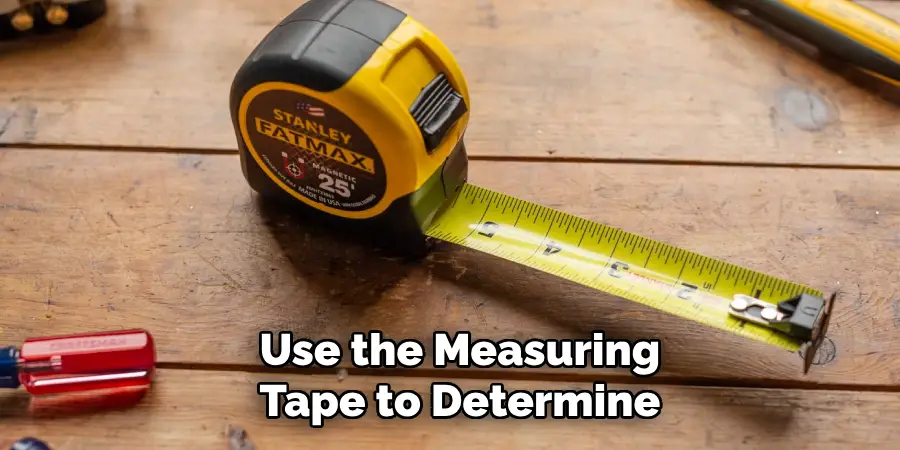
Use the measuring tape to determine the depth of each hole. This will help determine the soil’s overall absorption rate. Fill each hole with water and let it sit for at least two hours before starting the actual test. This will ensure that the soil is fully saturated.
Step 4: Measure Water Depth
After two hours, use the measuring tape to determine the water depth in each hole. This will help calculate the soil’s absorption rate. Using a soil probe, create a small hole at the bottom of each test hole and let it fill with water. Measure how long it takes for the water to drop one inch below the surface. Repeat this process for each hole and record the results.
Step 5: Calculate Results
Once you have completed the percolation test, use a formula to calculate the absorption rate of the soil based on the drop in water level over time. This will determine if the soil can effectively filter wastewater.
If you are still determining the results of your perc test, it is best to contact a professional for further evaluation. They will be able to provide guidance on the next steps and any necessary modifications to ensure a successful septic system installation.
By following these steps, you can successfully conduct a perc test for your septic system and ensure that the soil on your property is suitable for wastewater treatment. Remember to always follow local regulations and guidelines and consult a professional if needed.
Safety Tips for How to Do a Perc Test for Septic System
- Before starting the perc test, it is important to obtain necessary permits from your local authority and follow any regulations or guidelines they may have in place.
- Have a professional septic system installer inspect the location of the proposed septic system to ensure it meets all necessary requirements and does not pose any safety hazards.
- Always wear proper protective gear, including gloves, goggles, and sturdy footwear, when conducting a perc test. This will help prevent accidents or injuries.
- Ensure the area where the perc test is being conducted is clear of any underground utilities, such as gas lines or electrical wires. Contact your local utility company to determine any potential hazards if needed.
- When digging holes for the test, use caution and be aware of any potential hazards in the surrounding area. This includes avoiding steep slopes, unstable ground, and any potential sources of contamination.
- Only work with others while conducting a perc test. It is always best to have at least one other person present in case of an emergency or accident.
- After completing the perc test, properly cover and secure all holes to prevent anyone from accidentally falling into them.
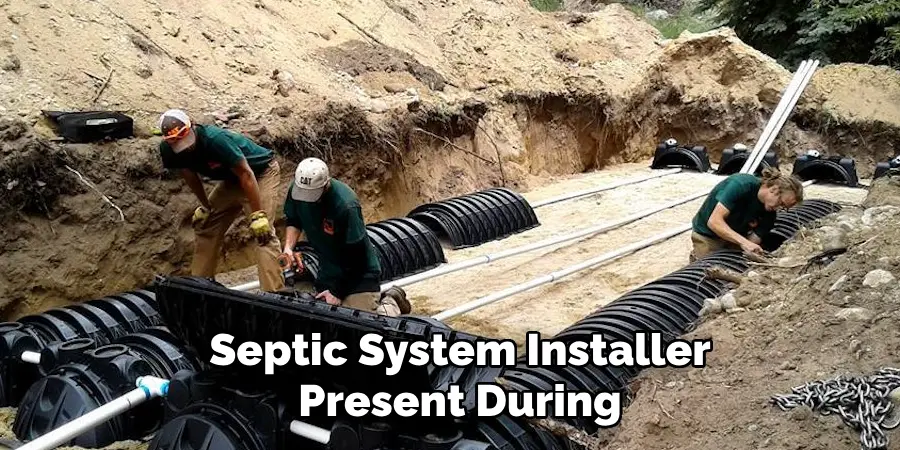
Following these safety tips ensures that your perc test for a septic system is done safely and without any accidents or injuries. Remember to always prioritize safety over convenience when conducting this important test. It is also recommended to have a professional septic system installer present during the test for added safety measures and guidance.
Regulatory Considerations for Doing a Perc Test for Septic System
1. Local Regulations
Before conducting a perc test for a septic system, it is important to research and comply with local regulations. Each state and county may have specific rules and guidelines for conducting the test, such as required testing methods and minimum soil permeability rates.
2. Zoning Restrictions
In addition to following local regulations, it is necessary to consider any zoning restrictions that may affect the placement and installation of a septic system. Some areas may have designated zones for septic systems, while others may have regulations on the minimum distance from bodies of water or neighboring properties.
3. Soil Conditions
The primary purpose of a perc test is to determine the rate at which soil can absorb liquid. Therefore, it is crucial to thoroughly assess the soil conditions before conducting the test. Factors such as type of soil, depth to bedrock or water table, and slope of the land can all affect the results of a perc test.
4. Environmental Impact
Septic systems have the potential to impact the environment if not properly designed and installed. It is important to consider any potential environmental impacts when choosing a location for a septic system and conducting a perc test. This includes factors such as proximity to wetlands or protected areas, soil erosion, and potential for groundwater contamination.
5. Health and Safety
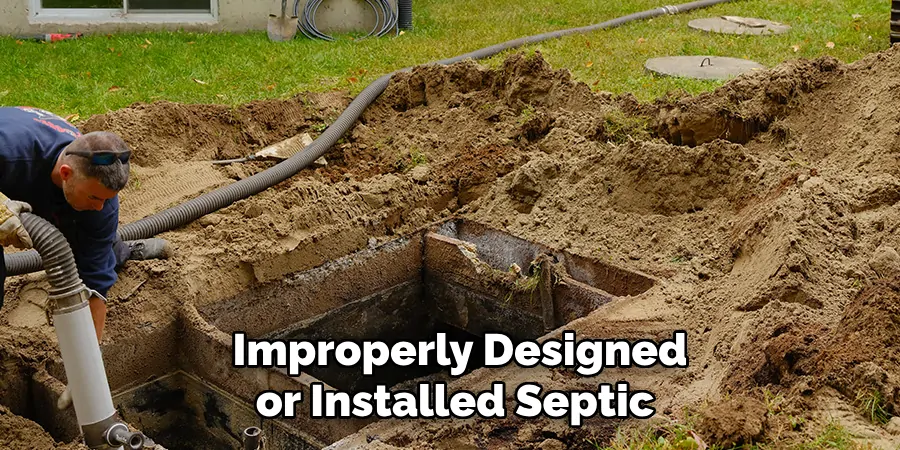
Improperly designed or installed septic systems can pose health risks to both individuals and the surrounding environment. Before conducting a perc test, it is important to ensure that all necessary safety measures are in place. This may include wearing proper protective gear and following recommended protocols for handling and disposing of any materials used in the test.
6. Professional Assistance
In some cases, it may be necessary to seek professional assistance when conducting a perc test for a septic system. This is especially true if the results of the test will impact permit approvals or building codes. Consulting with a licensed engineer or septic system installer can help ensure that the test is conducted properly and in compliance with all regulations.
7. Timing Considerations
The timing of a perc test can also play a crucial role in its accuracy and reliability. Factors such as weather conditions, seasonal changes, and recent land use activities can all affect the results of a perc test. It is important to carefully consider these factors when scheduling a perc test to ensure the most accurate and reliable results.
8. Ongoing Maintenance
Finally, it is important to remember that a perc test is only one step in installing a septic system. Regular maintenance and upkeep of the system will be necessary to ensure its functionality and longevity. It is important to familiarize oneself with local regulations and best practices for maintaining a septic system to avoid potential issues in the future.
Common Perc Test Challenges and Solutions
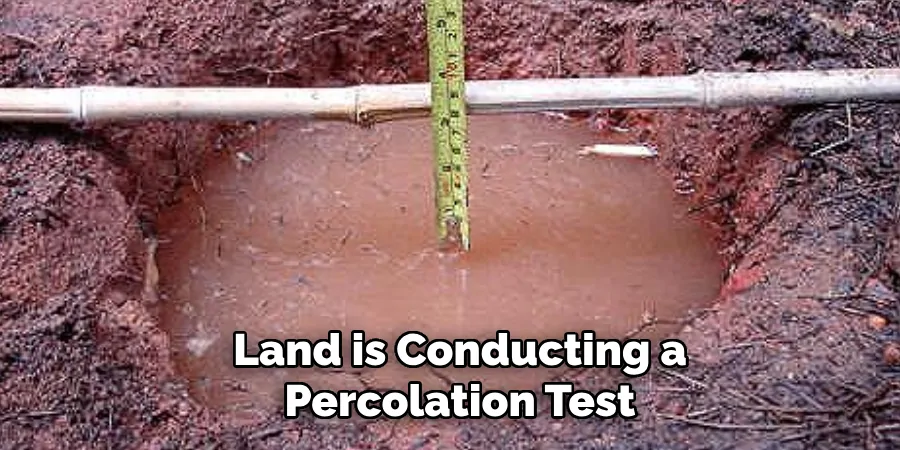
One key step in building on land is conducting a percolation test or perc test. This test helps determine the rate at which water can be absorbed into the soil, which in turn affects the design and placement of a septic system.
While perc tests are essential to any construction project, they can also present several challenges that must be addressed. This article will discuss seven common perc test challenges and provide solutions to overcome them.
1. Unsuitable Soil Type
One of the most common challenges when conducting a perc test is finding that the soil type on the property is unsuitable for absorption. This can occur if the soil contains a high concentration of clay, which can greatly impede water absorption. In this case, the solution is to either find an alternative location for the septic system or use specialized equipment to improve soil drainage.
2. High Water Table
A high water table refers to a situation where the level of groundwater is close to or above the surface of the soil. This can be a significant challenge during a perc test as it can affect the accuracy of the results. To overcome this challenge, alternative methods such as deep hole testing or mounding systems may be used to determine the soil’s absorption rate.
3. Restricted Test Area
Due to size limitations or obstructions, conducting a perc test in an ideal location may be difficult. In such cases, the solution is to expand the test area or use specialized equipment, such as a hydraulic probe, to reach deeper into the soil.
4. Poor Weather Conditions
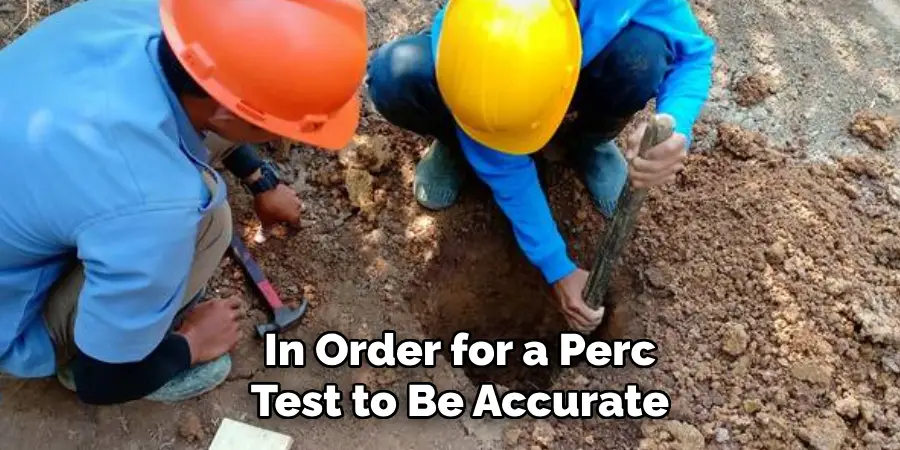
In order for a perc test to be accurate, it must be conducted under specific weather conditions. Heavy rain or snowfall can greatly affect the results and cause them to be invalid. To overcome this challenge, it is important to carefully plan the timing of the test and reschedule if necessary.
5. Inadequate Absorption Capacity
In some cases, a perc test may reveal that the soil has inadequate absorption capacity for a conventional septic system. This can be due to various factors, such as high clay content or shallow bedrock. In such situations, alternative systems such as aerobic treatment units or drip systems may need to be considered.
6. Improper Test Method
Another common challenge is conducting a perc test using improper methods, resulting in inaccurate results. This can be avoided by ensuring that the test is conducted by a qualified professional who follows proper procedures and uses calibrated equipment.
7. Lack of Communication
Effective communication between the perc test contractor and the local health department is essential for a successful perc test. Without proper communication, there may be delays in obtaining necessary permits or addressing any issues that may arise during the testing process. To avoid this challenge, it is important to establish clear lines of communication from the beginning.
While perc tests can present challenges during a construction project, they are crucial for determining the feasibility of a septic system on a particular piece of land. One can ensure a smooth and successful perc test process by being aware of these common challenges and implementing the abovementioned solutions.
Benefits of Doing a Perc Test for Septic System
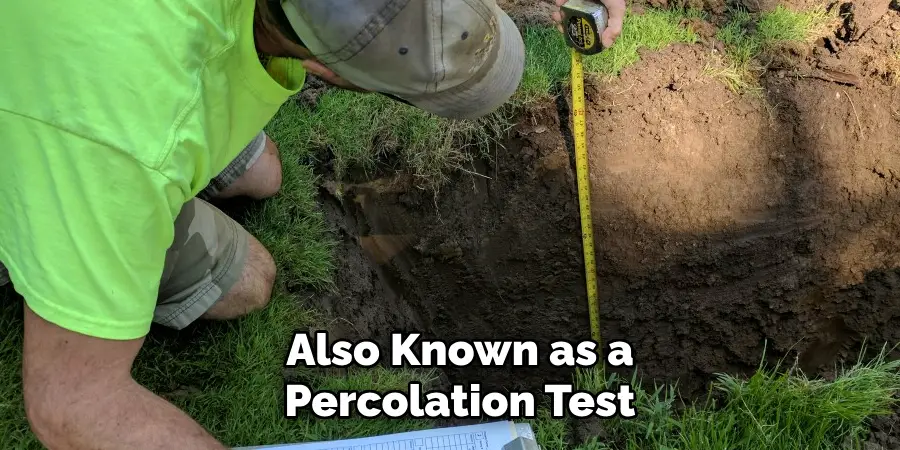
- Ensures Proper Functioning of Septic System: A perc test, also known as a percolation test or soil test, is a crucial step in determining the suitability of a particular location for a septic system. It involves digging holes and conducting soil tests to determine how well the soil can absorb and filter wastewater. By doing a perc test, you can ensure that your septic system will function properly and effectively treat and dispose of wastewater.
- Saves Money in the Long Run: Investing in a perc test before installing a septic system can save you money in the long run. By determining the soil conditions beforehand, you can avoid costly repairs or replacements due to malfunctioning septic systems. If the soil is not suitable for a septic system, you can explore other options, such as alternative treatment systems or different locations.
- Protects the Environment: Improperly functioning septic systems can lead to contamination of groundwater and nearby bodies of water. This affects the environment and poses a health risk to humans and animals. By conducting a perc test, you can ensure that your septic system will not cause harm to the environment and its inhabitants.
- Complies with Local Regulations: In many areas, conducting a perc test is required by law before installing a septic system. These regulations protect public health and the environment. By complying with these regulations, you can avoid future fines or legal issues.
- Provides Peace of Mind: Knowing that your septic system has been properly tested and installed can give you peace of mind. You can have confidence that your wastewater is being treated and disposed of effectively without any potential environmental or health risks.
- Aids in Property Evaluation: If you are considering buying a property with a septic system, it is important to conduct a perc test to ensure the system is functioning properly. This can help you avoid any surprises or unexpected expenses in the future and give you a better understanding of the property’s value.
- Allows for Proper Sizing of Septic System: The results of a perc test also determine the size of the septic system needed for your household’s wastewater needs. By accurately sizing the system, you can avoid overloading it and causing potential issues with its functioning. This can also save you money on installation costs by only installing a system that is suitable for your household’s needs.
In conclusion, conducting a perc test for your septic system offers multiple benefits, such as ensuring proper functioning, protecting the environment, saving money in the long run, and complying with regulations. It also provides peace of mind, aids in property evaluation, and allows for the proper sizing of the septic system.
Common Challenges That May Arise During a Perc Test and How Can They Be Solved
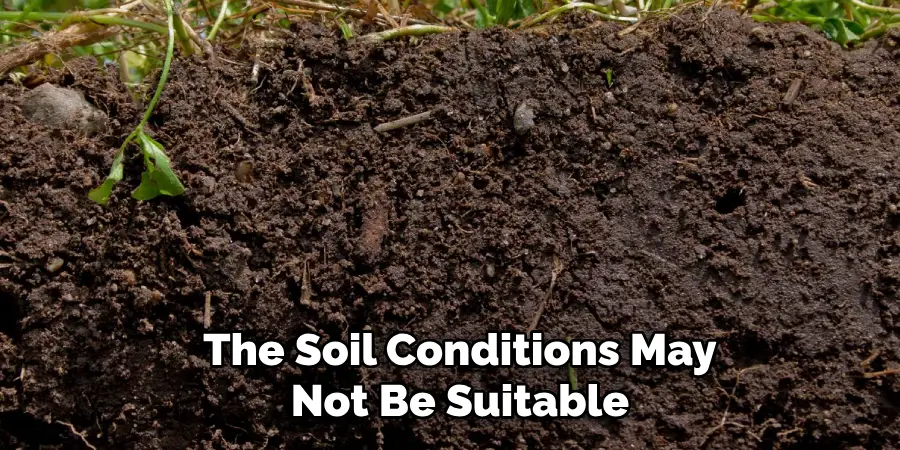
- Poor Soil Conditions: In some cases, the soil conditions may not be suitable for a septic system. This can include high water tables, insufficient permeability, or excessive rocks and debris in the soil. To address this challenge, alternative treatment systems such as aerobic treatment units can be used, or the location of the septic system can be adjusted.
- Access Limitations: Conducting a perc test requires digging holes in the ground, which can be difficult if the location is not easily accessible. This challenge can be solved by using specialized equipment or finding alternative methods, such as borehole testing.
- Seasonal Variations: The results of a perc test may vary depending on the season. During wetter seasons, soil may have a lower permeability, while during drier seasons, it may have a higher permeability. This challenge can be overcome by conducting the test multiple times throughout the year and taking an average of the results.
- Contaminated Soil: In some cases, the soil may already be contaminated with chemicals or pollutants, which can affect the accuracy of the PC test results. To address this issue, a soil remediation process may be necessary before conducting the test.
- Inaccurate Testing Techniques: A perc test must be conducted accurately, and proper techniques must be followed to ensure reliable results. If not done correctly, it can lead to incorrect conclusions and potentially cause future issues with the septic system. This challenge can be solved by hiring a professional who is experienced in conducting perc tests.
- Local Regulations: Different areas may have varying regulations and requirements for conducting a perc test. Researching and understanding these regulations before beginning the test is important to avoid any delays or complications.
- Cost: Conducting a perc test can be an added expense when installing a septic system, and the cost may vary depending on location and soil conditions. However, this cost can ultimately save you money in the long run by avoiding potential issues and ensuring the proper functioning of your septic system.
Conducting a perc test accurately and in compliance with regulations is important to ensure a successful and effective septic system. Overall, the benefits of conducting a perc test outweigh any potential challenges, making it a crucial step in the installation process.
Potential Consequences of Not Performing a Perc Test Before Installing a Septic System
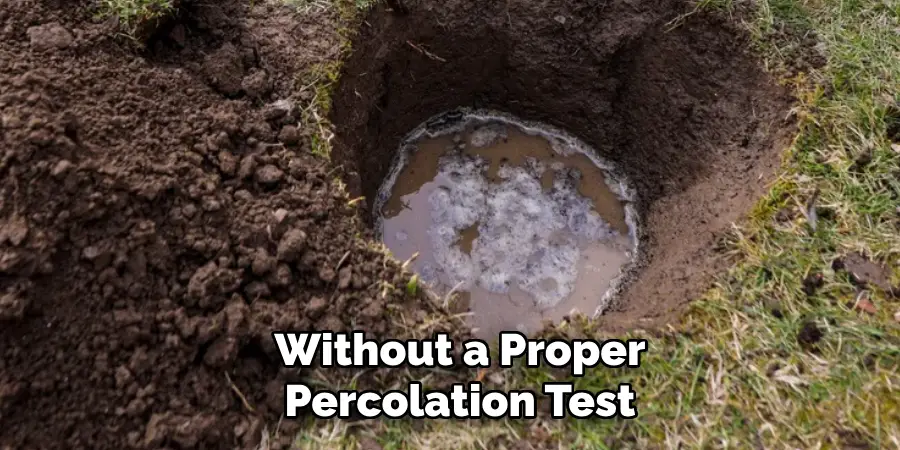
- Environmental Damage: Without a proper percolation test, the septic system may be installed in an area suitable for drainage. This can lead to contamination of nearby water sources and damage to the surrounding ecosystem.
- Health Risks: A failed PC test can result in sewage backing up into the home or contaminating well water. This poses serious health risks to the home’s occupants and can lead to illnesses or diseases.
- Legal Issues: In some areas, a perc test is required by law before installing a septic system. If this step is skipped and issues arise later, the homeowner may face legal consequences and fines for not following regulations.
- Costly Repairs: Installing a septic system is a major investment, and without a perc test, there is no guarantee that the system will function properly. If problems arise after installation, repairing or replacing the system can be extremely costly.
- Decrease in Property Value: A failed perc test can also decrease the value of a property as potential buyers may be deterred by the potential issues with the septic system. This can make it difficult to sell the property in the future.
- Difficulties Obtaining Permits: With a perc test, obtaining permits for building on the property or making upgrades may be easier. Local authorities often require proof of a successful perc test before granting building permits.
- Time and Effort: Not performing a perc test before installing a septic system can result in delays and added hassle. If issues arise, the installation process may need to be halted, leading to additional time and effort spent on the project.
While these consequences may seem daunting, they can all be avoided by simply performing a perc test before installing a septic system. This important step ensures that the system will function properly and prevents potential problems that can be costly and harmful to the environment and health.
Are There Any Specific Guidelines or Regulations for Disposing of the Perc Test Materials After Completion?
After completing the perc test, it is important to properly dispose of the test materials. This not only ensures environmental safety but also prevents any potential health hazards. In most areas, specific guidelines and regulations are in place for disposing of perc test materials.
These guidelines may vary depending on the location and local regulations. It is important to check with your local authorities or waste management agency for specific guidelines. In general, the following are some common guidelines and regulations for disposing of perc test materials:

- Do not dispose of leftover PC test materials down storm drains or into bodies of water. Doing so can harm aquatic life and contaminate water sources.
- Do not burn or incinerate the materials. This can release harmful chemicals into the air and pollute the environment.
- Instead, dispose of the materials at a designated hazardous waste facility. These facilities are equipped to handle and dispose of potentially harmful materials safely.
- If you are using equipment for the perc test, such as a soil auger or hand pump, make sure to properly clean and disinfect it before storing or disposing of it.
- Any leftover chemicals used in the perc test, such as hydrochloric acid, should also be properly disposed of at a hazardous waste facility.
- If you need help with proper disposal of any materials used in the perc test, it is best to consult a professional or local authorities for guidance.
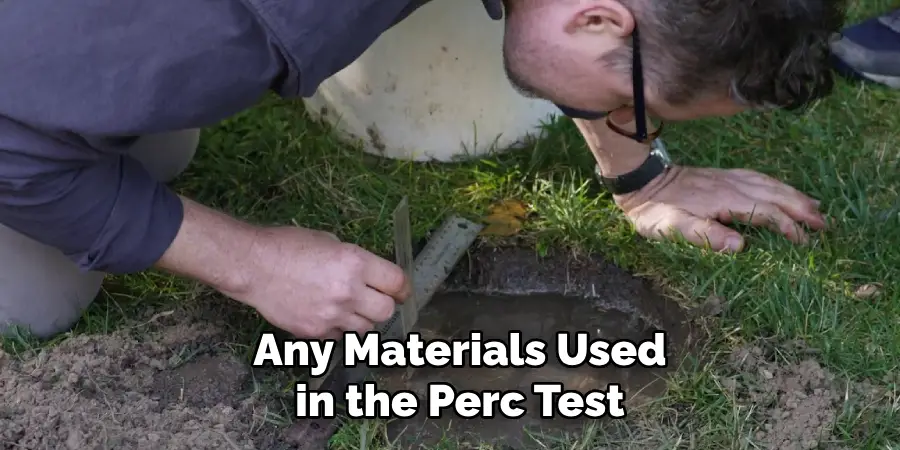
Remember, proper disposal of perc test materials is not only a legal requirement but also an important step in protecting the environment and public health. By following these guidelines and regulations, you can ensure that your perc test is completed correctly, safely, and responsibly.
Conclusion
In conclusion, while the PC test is an essential step in determining the feasibility of installing a septic system, certain disadvantages must be considered. These include potential damage to the property during excavation, high costs associated with hiring professionals and obtaining permits, and strict regulations for disposing of PC test materials.
Despite these challenges, it is important to remember that the perc test is necessary for ensuring the proper functioning and environmental safety of the septic system.
By following proper techniques and guidelines and seeking help from experts if needed, one can successfully complete a perc test for their septic system. I hope reading this post has helped you learn how to do a perc test for septic system. Make sure the safety precautions are carried out in the order listed.

